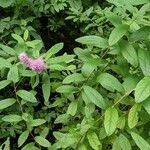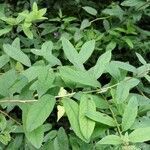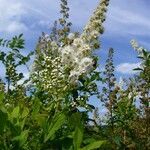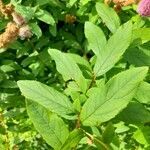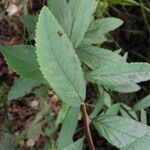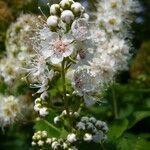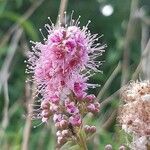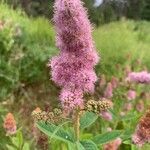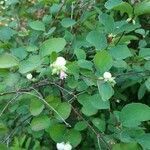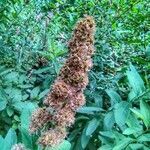Shrubs erect, to 2 m tall. Branchlets dense, yellowish brown, slightly angled, pubescent when young, later glabrescent; buds ovoid to oblong-ovoid, 3–5 mm, with several brown scales, apex acute. Petiole 1–4 mm, glabrous; leaf blade oblong-lanceolate to lanceolate, 4–8 × 1–2.5 cm, glabrous, occasionally thinly pubescent on margin, base cuneate, margin entire to densely and sharply serrate or deeply incised doubly serrate, apex acute or acuminate. Panicles oblong to pyramidal, 6–13 × 3–5 mm, densely many flowered; rachis and pedicels thinly pubescent; pedicels 4–7 mm; bracts lanceolate to linear-lanceolate, 6–10 mm, slightly thinly pubescent, margin entire or with a few teeth. Flowers 5–7 mm in diam. Hypanthium campanulate, puberulous abaxially. Sepals triangular, 1–1.5 mm, ascending in fruit. Petals pink, ovate, 2–3.5 × 2–2.5(–3) mm, apex often obtuse. Stamens ca. 30, nearly 2 × as long as petals. Disk annular, with crenulate lobes. Carpels sparsely pubescent; styles shorter than stamens. Follicles erect, almost parallel, glabrous or sparsely pubescent on adaxial suture; styles recurved. Fl. Jun–Aug, fr. Aug–Sep.
A clump forming shrub. It grows 1.2-2 m tall. The leaves are oblong or sword shaped and 2.5-8 cm long. They have double teeth.
A similar Eurasian sp. that sometimes escapes from cult., has pink fls, and the lvs are broadest below the middle
